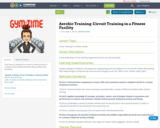
This lesson is designed to be used in a fitness facility. It is aligned with the Nebraska State Physical Education Standards.
- Subject:
- Education
- Material Type:
- Activity/Lab
- Lesson
- Lesson Plan
- Date Added:
- 09/20/2018

This lesson is designed to be used in a fitness facility. It is aligned with the Nebraska State Physical Education Standards.
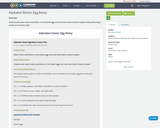
Students will match colors and letters on the Easter eggs and race them back to team’s basket while performing a variety of locomotor skills.
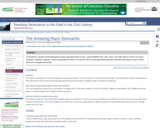
Students will learn how to perform basic skills using a Garmin GPS unit; mark waypoints, navigate to a waypoint, use the compass and 'go to' functions to estimate distance to a pre-programmed point, change GPS data to find hidden locations. Students will work in teams and help each other as they learn new GPS skills and gain a working understanding of georeferenced data, using clues and team work to solve problems, and how objects are oriented in space.
(Note: this resource was added to OER Commons as part of a batch upload of over 2,200 records. If you notice an issue with the quality of the metadata, please let us know by using the 'report' button and we will flag it for consideration.)

Ara macao: Information

This assignment provides the opportunity for students to:Compare and contrast the nontax operational features of various entity forms including formalities, rights and duties of owners, liabilities, effect of bankruptcy and dissolution.Develop a list of questions to ask a business owner/client in order to perform an analysis and determine the appropriate entity form for the business.Interview a business owner to determine the owner’s specific needs concerning control, rights and duties, liabilities, taxes, formalities, effect of bankruptcy, and dissolution.Evaluate the owner’s answers to the questions concerning specific needs related to control, rights and duties, liabilities, taxes, formalities, effect of bankruptcy, and dissolution.Recommend an appropriate business form based on the business owner’s specific needs.Justify choices in making a recommendation (justification based on readings).Draft appropriate entity paperwork you would file with the Idaho Secretary of State.Communicate effectively by writing documents that are clear, concise, and compelling.
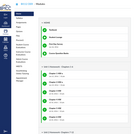
This course is designed to be taught using the textbook Cell Biology for Health Occupations, adapted from OpenStax.
(http://cnx.org/contents/Th3V8ojZ@3.1:zMTtFGyH@4/Introduction).
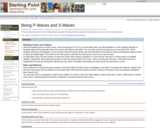
Teach students about P-waves and S-waves by having them model them with their own bodies.
(Note: this resource was added to OER Commons as part of a batch upload of over 2,200 records. If you notice an issue with the quality of the metadata, please let us know by using the 'report' button and we will flag it for consideration.)
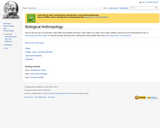
How this course is intended to be used: This course is set up to be used as either fully online, face-to-face (f2f), or hybrid. Note that the course outcomes and some assessments have variations available for each type of course (e.g., Public Awareness Campaign, Dancing Skeletons Essay & Discussion)
Resources for this course:
OER resources: The majority of materials used in this course are OER and can be found via this page (under Course Modules).
Paid resources: Only one small textbook is suggested for the course, the ethnography Dancing Skeletons: Life and Death in West Africa by Katharine Dettwyler (ISBN-10: 088133748X). It's approximately $13.00 new and can be found for approximately $5.00 used. It's used for the Unit 3 assessment, Dancing Skeletons Essay & Discussion. We think that it's an integral part of the course, due to its focus on human biology and biocultural/environmental interactions. It also provides an excellent portrayal of an anthropologist's experience in the field. If you require additional or alternate textbooks, we have put together a list of texts available for around $30.
Explanation of approach: As you peruse the reading material in the course module pages you might find that they contain less detail than what you would see in a "normal" textbook. This is intentional. One thing we find incredible about higher education is that the student often reads the textbook only to go into class and have the professor lecture for two hours on the exact same material. Because of this repetition of the material, students often become exasperated and either stop reading the material or stop paying attention in class. We've also found that students in the introductory anthropology courses frequently struggle with picking out the basic concepts from among the myriad of material from the textbook. We think that students in introductory anthropology courses such as this one, most of whom are not going to be anthropology majors, should read the basic information outside of class. This allows the instructor to focus on providing more explanatory details and help students work through critical thinking about the material in class. Therefore, the readings in the course modules have the basic information. Through in-class activities, discussions, and homework assignments, the job of the instructor is to help students move deeper into and synthesize the material.
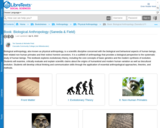
Biological anthropology, also known as physical anthropology, is a scientific discipline concerned with the biological and behavioral aspects of human beings, their related non-human primates and their extinct hominin ancestors. It is a subfield of anthropology that provides a biological perspective to the systematic study of human beings. This textbook explores evolutionary theory, including the core concepts of basic genetics and the modern synthesis of evolution. Students will examine, critically evaluate and explain scientific claims about the origins of humankind and modern human variation as well as biocultural evolution. Students will develop critical thinking and communication skills through the application of essential anthropological approaches, theories, and methods.
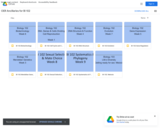
Slides for a 10 week course.
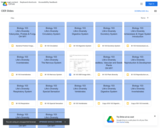
Slides for Biology 103.

After learning, comparing and contrasting the steps of the engineering design process (EDP) and scientific method, students review the human skeletal system, including the major bones, bone types, bone functions and bone tissues, as well as other details about bone composition. Students then pair-read an article about bones and bone growth and compile their notes to summarize the article. Finally, students complete a homework assignment to review the major bones in the human body, preparing them for the associated activities in which they create and test prototype replacement bones with appropriate densities. Two PowerPoint(TM) presentations, pre-/post-test, handout and worksheet are provided.
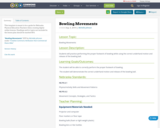
This template is meant to be a guide for Nebraska Physical Education Teachers when creating digital online lessons. Headings and/or topics not included in the lesson plan should be marked N/A.
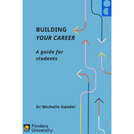
This book has been written as a useful companion for students in high school, vocational, and higher education to understand the world of work and how to establish a career. The lessons in this book are also useful to other readers, especially those that are in the early stages of their careers or those looking to transition into other careers - something that will happen much more frequently in the coming years. This book brings together scholarly research in careers and employability in an engaging manner for readers to gain a broader understanding of career motivations and identity blended together with practical advice and guidance on career management strategies.
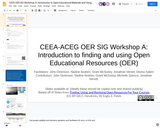
Workshop presentation for CEEA 2019
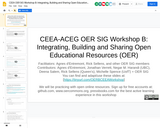
A workshop on creating and sharing OER
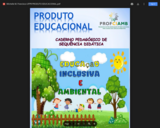
Este material é um produto educacional criado em colaboração com os estudantes do 3º ano do Ensino Fundamental I , que está relacionado à dissertação “ Educação Inclusiva e Meio Ambiente - Caminhos para uma Educação , Sustentável, Planetária e Humanizadora”, defendida no Mestrado Profissional para o Ensino de Ciências Ambientais da Universidade Federal do Paraná – Setor Litoral. Trata-se de uma sequencia didática, em que consiste em uma série de atividades que criam um ambiente que facilita e torna atrativa a aprendizagem do estudante. A elaboração desse produto educacional, se deu através de pesquisas sobre a necessidade de uma escola realmente inclusiva, que valorize a diversidade humana e a biodiversidade local, promovendo a educação inclusiva, educando os estudantes para a cidadania planetária
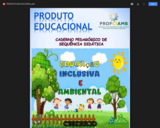
Este material é um produto educacional criado em colaboração com os estudantes do 3º ano do Ensino Fundamental I , que está relacionado à dissertação “ Educação Inclusiva e Meio Ambiente - Caminhos para uma Educação , Sustentável, Planetária e Humanizadora", defendida no Mestrado Profissional para o Ensino de Ciências Ambientais da Universidade Federal do Paraná – Setor Litoral. Trata-se de uma sequencia didática, em que consiste em uma série de atividades que criam um ambiente que facilita e torna atrativa a aprendizagem do estudante. A elaboração desse produto educacional, se deu através de pesquisas sobre a necessidade de uma escola realmente inclusiva, que valorize a diversidade humana e a biodiversidade local, promovendo a educação inclusiva, educando os estudantes para a cidadania planetária.

Calculus is designed for the typical two- or three-semester general calculus course, incorporating innovative features to enhance student learning. The book guides students through the core concepts of calculus and helps them understand how those concepts apply to their lives and the world around them. Due to the comprehensive nature of the material, we are offering the book in three volumes for flexibility and efficiency. Volume 1 covers functions, limits, derivatives, and integration

Calculus is designed for the typical two- or three-semester general calculus course, incorporating innovative features to enhance student learning. The book guides students through the core concepts of calculus and helps them understand how those concepts apply to their lives and the world around them. Due to the comprehensive nature of the material, we are offering the book in three volumes for flexibility and efficiency. Volume 2 covers integration, differential equations, sequences and series, and parametric equations and polar coordinates.